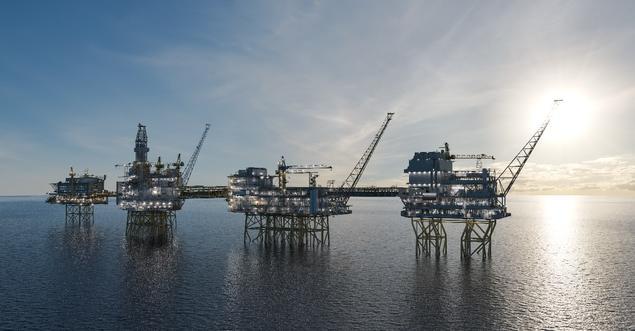‘Continuing the oil age is increasingly difficult to defend’

After the opening of the Sverdrup oil field off the western coast of Norway, FNI Research Professor Lars Gulbrandsen talked to Der SPIEGEL about the difficult dilemma facing Norwegian policymakers.
How can Norway combine its declared objective of being an international climate-policy frontrunner with the ambition of maintaining high levels of oil and gas production far into the future? With the recent opening of the ‘Johan Sverdrup’ oil field – Norway’s third largest oil field in history, forecast to supply the world market with fossil fuels for 50 years – this question is more pressing than ever. It is also the point of departure for the article ‘Norwegens neuer Ölrausch’ (‘Norway’s new oil rush’), written by Der SPIEGEL’s science editor, Christoph Seidler.
Morally difficult
 ‘Most politicians are in favour of continuing the oil age’, says Lars Gulbrandsen in an interview with Der SPIEGEL. ‘Morally, however, that is becoming increasingly difficult to defend.’ On the other hand, implementing cuts in oil production is also a tricky matter, as the oil industry is a central factor in Norwegian policymaking. Equinor, formerly Statoil, is by far the largest company in Norway today, Gulbrandsen explains.
‘Most politicians are in favour of continuing the oil age’, says Lars Gulbrandsen in an interview with Der SPIEGEL. ‘Morally, however, that is becoming increasingly difficult to defend.’ On the other hand, implementing cuts in oil production is also a tricky matter, as the oil industry is a central factor in Norwegian policymaking. Equinor, formerly Statoil, is by far the largest company in Norway today, Gulbrandsen explains.
The climate crisis has not deterred the Norwegian government from granting just under 70 new exploration licenses for the country's oil and gas industry. The hope now is for another major oil discovery. Discussions on Norway's greenhouse gas emissions have focused primarily on domestic emissions, says Gulbrandsen. Norway has set itself the goal of reducing emissions by at least 40 per cent by 2030 compared to 1990. Further, the aim is to become a ‘low-emission society’ by 2050 – which will mean at least 80 to 95 per cent lower CO2 emissions than in 1990.
Related reading: Norges vei til klimamålene: Kutte hjemme eller i Europa?
Exporting emissions
Norway is the seventh largest exporter of CO2 in the world today. As the Der SPIEGEL article notes, from the perspective of climate change, it really doesn’t matter where Norway’s oil goes, be it Germany, China or any other county – it will end up in the atmosphere regardless. Some 55 per cent of the exported fossil fuels are used in the transportation sector, for road transport and aviation; another 13 per cent goes to heating and power generation.
Also on the home front, Norway is struggling to reduce its greenhouse gas emissions, which are still higher than they were in 1990. The country's oil and gas sector is well aware of this, and Equinor has recently pledged to cut emissions by 40 per cent by 2030, further becoming ‘climate-neutral’ by 2050. To achieve these targets, Equinor will invest more than five billion euros, according to CEO Eldar Sætre. But in these calculations the company has not factored in the largest source of emissions by far: the combustion of fossil fuels that Norway exports.
Equinor’s climate-change announcement came just one day before the opening of the Sverdrup field. ‘Nobody believes that was a coincidence’, concludes Gulbrandsen.
You can read Der SPIEGEL’s article here (in German).
